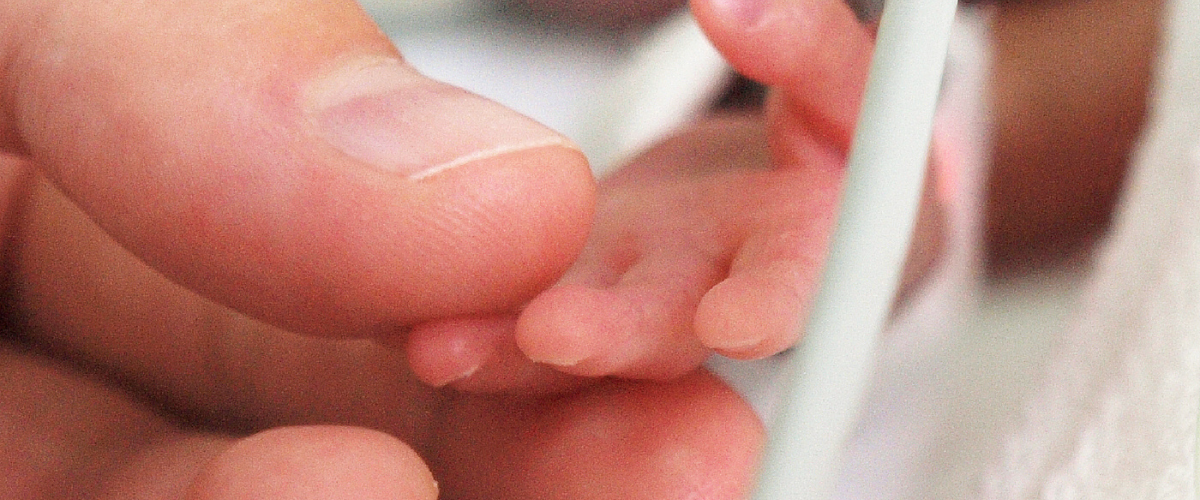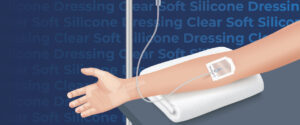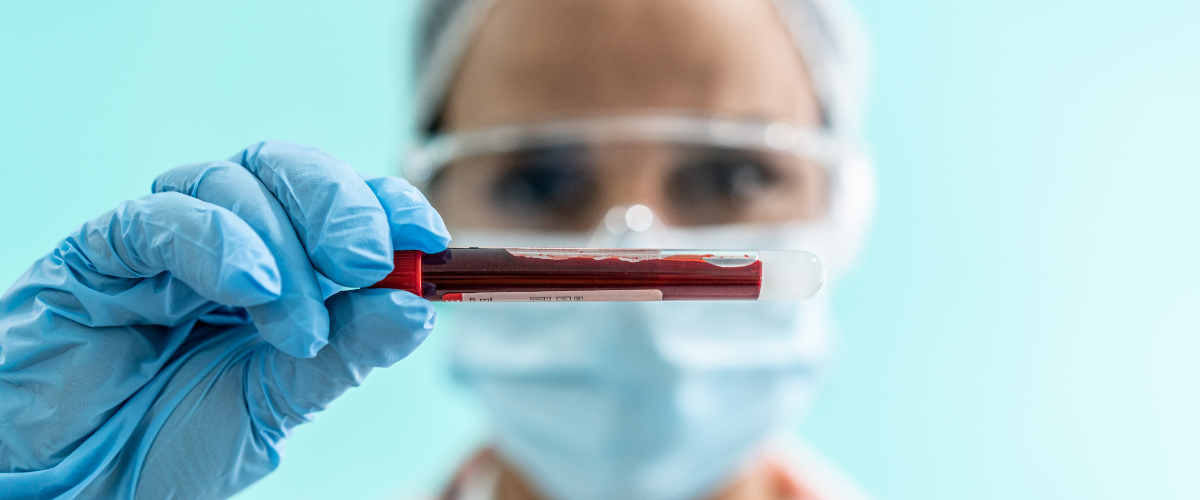| Last updated on July 3, 2023
Receiving a cancer diagnosis is often a life changing event.
For many patients with cancer, the focus is understandably on fighting the disease, however many newly diagnosed patients aren’t aware that managing the side effects of cancer treatment can be one of the biggest challenges they face.
While cancer treatments such as chemotherapy, radiation therapy, and targeted therapy can be lifesaving for patients – skin problems are especially common, exposing patients with cancer to even more discomfort, pain and increased risk of infection.
Skin complications resulting from cancer treatment can range from mild irritation to severe skin reactions. Layer on harsh acrylic dressings used for frequent intravenous therapy, and patients with cancer become at a high risk for medical adhesive related skin injury (MARSI).
The skin is our first line of defense against infections, which means maintaining skin integrity is a high priority, especially for immunocompromised patients.
It’s essential for patients, caregivers and healthcare professionals to be aware of these potential skin-related side effects and take steps to prevent or manage them using the right technology and measures.
In this article explore:
- Cancer treatments and side effects
- Cancer treatments and skin damage
- The effects of skin damage on cancer treatment
- How to minimize skin damage for patients with cancer
Cancer treatments and side effects
Side effects from cancer treatment can be physically and emotionally draining for many patients. In some cases, side effects can even force patients to discontinue or delay their treatment, which can have serious implications for their prognosis.
The type of cancer a patient has will determine which treatment method will be most effective.
The most common medical treatments for cancer include:
- Surgery
- Chemotherapy
- Radiation therapy
- Targeted therapy
- Immunotherapy
- Stem cell or bone marrow transplant
- Hormone therapy
A patients’ health team will steer them toward the treatment that has the best chance of success for their particular type and stage of cancer. Each treatment method will come with its own statistics for success according to evidence-based practice.
Likewise, each treatment method will come with its own side effects, which in some cases will include skin complications.
Some of the most common side effects of cancer treatment include, but aren’t limited to:
- Appetite loss
- Bleeding and bruising
- Diarrhea
- Edema
- Fatigue
- Hair loss
- Nausea and vomiting
- Skin problems
Cancer treatments and skin damage
According to the National Cancer Institute, the cancer treatments most likely to cause skin damage as a side effect include (but may not be limited to):
- Radiation therapy
- Chemotherapy
- Skin damage side effects may be mild with these forms of treatment, but the severity may increase when these treatments are combined with:
- Stem cell transplant
- Targeted therapy
- Immunotherapy
- Skin damage side effects may be mild with these forms of treatment, but the severity may increase when these treatments are combined with:
Most cancer treatment drugs are administered to the bloodsteam by an IV catheter. Care is taken to ensure surrounding tissues and skin are not exposed by a leak or drip, as contact with the medication can cause blistering and skin damage.
Graft versus host disease as a side effect of stem cell cancer treatment
In some cases during stem cell transplant treatments, a condition known as graft versus host disease (or GvHD) may occur.
GvHD may present itself in one of two ways:
- Acute GvHD (usually occurs shortly after the transplant and most often affects skin, gastrointestinal tract, and liver).
- Chronic GvHD (which can occur any time after an allogeneic stem cell transplant, usually within two years, and can affect skin, mouth, liver, lungs, GI tract, muscles, joints, or genitals).
GvHD remains a major cause of morbidity and mortality following allogeneic transplants in pediatric patients.
The common signs of GvHD in children include:
- Skin rash (usually starting on palms of hands or soles of feet)
- Diarrhea
- Jaundice (yellow skin color)
- Abnormal liver function tests
GvHD is not the only form of cancer treatment-related side effects that may result in skin damage.
What does skin damage caused by cancer treatments look like?
Depending on the form of treatment being received, patients may notice several forms of skin reactions, including:
- Sudden severe rash or sensitivity to the sun
- Dryness, peeling, itching, or discolouration such as skin turning red or dark
- Swelling, puffiness and soreness of the skin
- Development of sores that can become painful and wet
Damage to the skin, especially which results in open sores, can lead to the development of infection in the skin or infection of the bloodstream.
Cancer treatments weaken the immune system, making cancer patients more susceptible to infections.
Skin infections, like bacterial skin infections or staph infections can cause serious health complications.
For cancer patients, these infections can quickly become fatal when the immune system is weakened.
If you are a caregiver for a patient receiving treatment and have noticed changes to skin and/or nail health, contact your medical team as soon as possible to monitor the areas and to provide treatment to relieve discomfort.
Medical adhesive-related skin injury (MARSI) in patients with cancer
MARSI occurs when a medical adhesive used on a patient, such as an IV-dressing, is not selected, applied and/or removed properly.
MARSI can present in different ways, including but not limited to:
- Skin stripping
- Skin tearing
- Irritant contact dermatitis
- Allergic contact dermatitis
- Folliculitis
- Tension blister
- Maceration
While MARSI can happen to any patient, patients with cancer are at a higher risk due to three primary factors:
- Their skin is more fragile or sensitive due to cancer treatment
- Consistent removal and reapplication of IV-dressings breaks down skin integrity at IV-sites
- A sensitive skin dressing was not used
Approximately 30% of cancer patients experience Medical Adhesive Related Skin Injury (MARSI)
While patients with cancer cannot control the side effects of their treatment or the frequent need for IV-dressings, healthcare providers can make the right choice when it comes to medical adhesives used.
Not all IV dressings are made equal, and the choice of dressing, including factors such as acrylic vs. silicone adhesive material, have an impact on the standard of care, delivery of therapy, and the degree to which a patient’s skin can be protected.
How to minimize skin damage for cancer patients
Today, new IV dressing technology, designed with patient skin safety, comfort and compassion in mind, is available.
Choosing the right medical dressing for a patient can make the difference between pain vs. comfort, infection vs. healing, skin injury vs. skin integrity.
Atraumatic adhesive products can successfully protect against complications of skin injuries, while preventing infections.
Covalon’s silicone based dressings are associated with significantly less damage to the outer skin layer and less pain on removal, preserving skin integrity to help prevent pain and infections.
Characteristics of silicone dressings include:
- Fluid retention and absorbency
- Adherence to skin without sticking to wounds
- Vapor permeability
- Atrumatic upon removal
- Unlike acrylic dressings, soft silicone will not cause epidermal stripping or pain upon removal.
Today, Covalon is trusted by 10 of the top 10 U.S. children’s hospitals for cancer treatment to provide the highest standard of infection prevention care for one of the country’s most vulnerable patient populations.
Medical professionals at a major Children’s Hospital in southern California recently started using Covalon’s silicone based dressing IV Clear, with feedback that the dressing was so gentle they were able to change a central line dressing without waking their pediatric patient — an incredible improvement to what can commonly be a very stressful experience to all involved.
Compassionate care technology reduces unwanted complications, improves patient outcomes, and supports stronger patient-clinician relationships.
If you’re interested in experiencing the difference of soft silicone yourself, request a free sample today, and experience how gentle and effective Covalon’s products are for yourself and for your patients.
References
National Library of Medicine: Interventional Pain Management for the Pediatric Cancer Patient
National Library of Medicine: Update on the Prevalence of Pain on Patients with Cancer
Psychiatry Today: Chronic Pain
American Cancer Society: Treatment for Cancer
Cleveland Clinic: Cancer Stages, Symptoms and Treatments
Cancer Research UK: Cancer treatment statistics
CDC: Side effects of cancer treatments
National Cancer Institute: Skin and Nail Changes and Cancer Treatments
Cancer Research UK: Your skin, nails and cancer treatments
Cleveland Clinic: Graft versus Host Disease
National Cancer Institute: Graft versus Host Disease
National Library of Medicine: Management of Acute GvHD in children
Texas Children’s Hospital: GvHD in children
National Cancer Institute: Why people with cancer are more likely to get infections
CDC: Staph infections can kill
Canadian Cancer Society: the Immune System
National Cancer Institute: Pain and cancer treatment: side effects
National Cancer Institute: Facts about cancer pain
Psychiatry today: Chronic pain and mental health
National Library of Medicine: Pain in children
National Library of Medicine: Pain management and wound care
National Library of Medicine: Impact of pain and opioid use on cancer survival

Alexandra is a digital marketer who is passionate about bringing awareness of Covalon’s compassionate care solutions to the vulnerable patient populations who need them most.




















